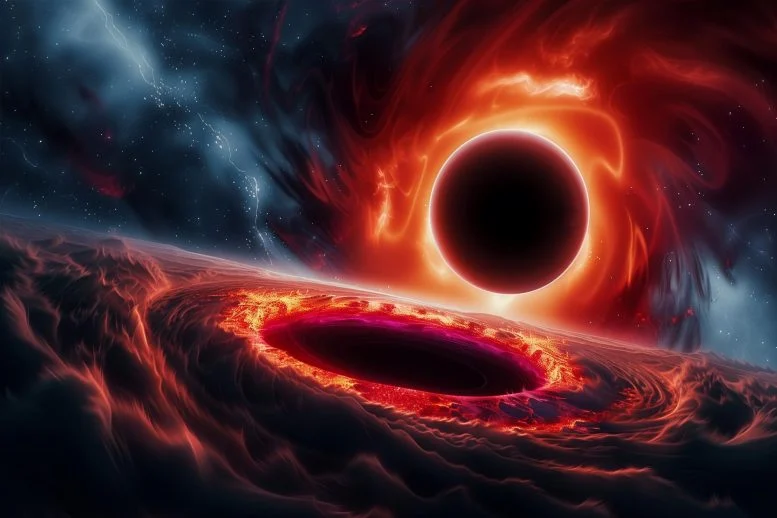
By Chinese Academy of Sciences September 13, 2024
Collected at: https://scitechdaily.com/mystery-in-space-chinese-astronomers-discover-black-hole-thats-breaking-the-rules/
Researchers in China have uncovered a low-mass black hole within the elusive mass-gap, defying previous scientific consensus.
By combining radial velocity and astrometry, they identified this black hole in a wide binary system, challenging existing theories on binary evolution and black hole formation. This significant finding not only adds a new member to the known range of black hole masses but also provides crucial insights into the dynamics of binary systems and stellar evolution.
Breakthrough in Black Hole Research
Chinese researchers have discovered a promising mass-gap black hole using radial velocity and astrometry methods. The study was published online on September 10 in Nature Astronomy. It was conducted by a team led by Dr. Song Wang, an associate researcher from the National Astronomical Observatories of the Chinese Academy of Sciences (NAOC).
Over the past six decades, scientists have discovered two dozen stellar-mass black holes using X-ray methods. The mass distribution of these black holes, mainly between five to 25 solar masses, shows a scarcity of black holes with masses ranging from three to five solar masses.
The mass gap may be caused by special mechanisms during supernova explosions that prevent the formation of black holes within this mass range. It could also be due to observational bias, since binaries including lower-mass black holes are more easily disrupted by natal kicks during supernova explosions and are therefore harder to detect.

Uncovering Hidden Black Holes
Although recent gravitational wave observations by the Laser Interferometer Gravitational-Wave Observatory have revealed the existence of compact objects within this mass gap, the question of whether low-mass black holes could exist in binaries remains a matter of debate. Such a system was expected to be non-interacting and without X-ray emission and could be searched for using radial-velocity and astrometric methods.
A Pioneering Discovery
Using spectroscopy obtained from the Large Sky Area Multi-Object Fiber Spectroscopic Telescope (LAMOST) and astrometry data from Gaia, this study conducted a search for binaries containing compact components.
The researchers discovered a low-mass dark object located in the binary system G3425. The visible star is a red giant with a mass of about 2.7 solar masses, while the dark object’s mass is about 3.6 solar masses, with a range of 3.1 to 4.4 solar masses. There is no light contribution from any other component in the system besides the red giant, proving that the dark companion is a black hole, with its mass falling within the mass gap.
Implications for Astrophysics
More notably, G3425 is a wide binary exhibiting an orbital period of approximately 880 days and near-zero eccentricity. The researchers found it difficult to explain its formation through standard binary evolutionary processes. Consequently, the formation of this surprisingly wide circular orbit challenges current binary evolution and supernova explosion theories.
The study demonstrates that combining radial velocity and astrometry can effectively detect quiescent compact objects in binary systems. This intriguing system strongly suggests the existence of binary systems containing low-mass black holes and can provide new insights into the formation and evolution of binary systems.
Reference: “A potential mass-gap black hole in a wide binary with a circular orbit” by Song Wang, Xinlin Zhao, Fabo Feng, Hongwei Ge, Yong Shao, Yingzhen Cui, Shijie Gao, Lifu Zhang, Pei Wang, Xue Li, Zhongrui Bai, Hailong Yuan, Yang Huang, Haibo Yuan, Zhixiang Zhang, Tuan Yi, Maosheng Xiang, Zhenwei Li, Tanda Li, Junbo Zhang, Meng Zhang, Henggeng Han, Dongwei Fan, Xiangdong Li, Xuefei Chen, Zhengwei Liu, Xiangcun Meng, Qingzhong Liu, Haotong Zhang, Wei-Min Gu and Jifeng Liu, 10 September 2024, Nature Astronomy.
DOI: 10.1038/s41550-024-02359-9

Leave a Reply